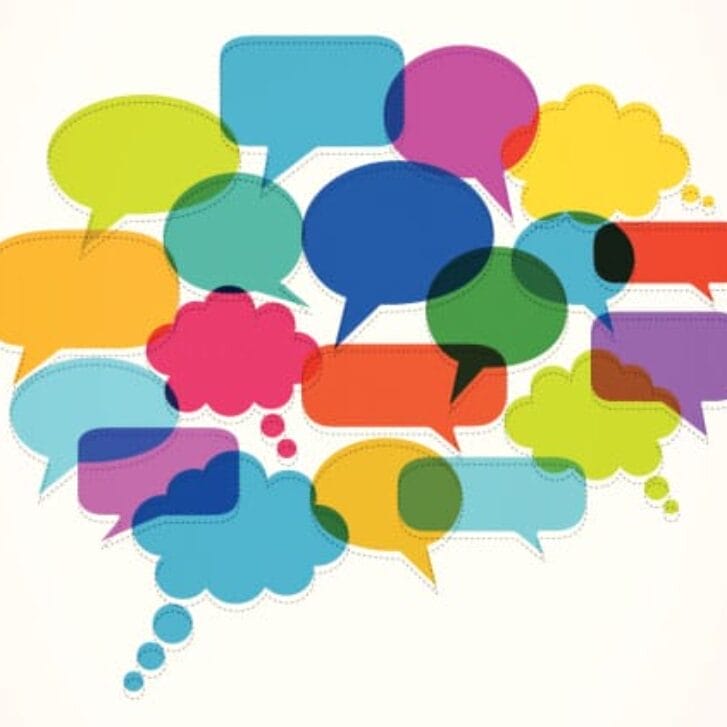On Monday, February 24, stock indices tumbled, spooked by reports that the coronavirus outbreak that emerged in China was spreading to countries including Italy, Iran, and South Korea. Two weeks later, trading in stocks across world markets remains choppy, reflecting hope that the economic fallout might be manageable—just as damage from the SARS epidemic was some two decades ago—but also fear that the economic impact could be significant and linger longer.
The markets’ movements mirror the uncertainty that prevails and persists not just in the U.S. but all over the world. Several weeks into the coronavirus outbreak that has brought the world’s second largest economy to its knees, some of the most basic aspects of the virus remain unknown. It’s not yet clear how widely beyond China COVID-19 will spread; numbers of infected individuals have recently surged outside China. Still, exactly how it is transmitted, how easily, and how lethal it might be are aspects of this coronavirus that remain to be uncovered, according to University of Pennsylvania scientists.
As the human toll mounts, so does the economic damage. The business realm, of course, tends to shudder in the face of uncertainty, and right now, with reports on the seriousness of the coronavirus evolving each day if not each hour, the eyes of commerce are on epidemiology.
“This has many economic implications,” says Wharton management professor Mauro Guillen. “It has implications not just for China but for the entire world. The world depends on Chinese growth,” he says, citing both the country’s supply-chain role and consumer buying power. Still, he notes: “It is unclear how much impact in the end this is going to have.” But what is clear is that if politics and trade wars emerged as uncertainties in recent years, now a third leg in the stool holding up global confidence has suddenly gone wobbly. Some observers describe it as a classic “black swan”—a random event that is completely unpredictable. (An interview with Nassim Taleb, author of the book from which the expression is derived, can be heard here.)
“The long-term repercussion quite apart from whatever happens now is that we’ve got a source of risk we hadn’t thought about,” says Marshall W. Meyer, a Wharton management professor emeritus who consults in China. “My view is there is going to be a big adjustment of global trade patterns unless we are really lucky and [the virus] goes away very quickly. This became apparent after SARS, but SARS went away. And this may or may not go away. The real problem is people’s confidence, and in China how much political damage there will be and whether it will be contained. And there is no way to know.”
An Economic Earthquake
The damage has already been severe and has reached into a surprising array of sectors. As previously noted, the markets two weeks ago responded negatively to the sharp uptick in cases outside of China, with the Dow Jones Industrial Average falling more than 1,000 points on February 24—its third-biggest one-day decline. Major American orchestras have canceled tours in China. The cruise industry has seen the public-relations nightmare of more than 1,200 passengers quarantined aboard the Diamond Princess in Yokohama. With moneyed Chinese travelers forced to stay home, European tourism has taken a hit. “It’s seen as on par with an earthquake, a situation of emergency,” Mattia Morandi, spokesman for Italy’s ministry of culture and tourism, told The New York Times.
Supply chains in the retail sector and others have been disrupted, factories in China have gone quiet, and passenger air travel has been curtailed. Apple recently announced that it now expects to miss its next quarterly revenue forecast as a result of shuttered factories and closed retail shops in China.
“This is going to be a slow-rolling, highly consequential event,” says Meyer. “I would say stock up on aspirin and Ibuprofen now, because the base ingredients come from China. Antibiotics come from China. Hong Kong wholly depends on China for its food supply, for its water.”
Economic disruption related to the coronavirus is expected to rob the world economy of growth for the first time since 2009, according to London-based research firm Capital Economics. “We assume the virus will be contained soon, and that lost output is made up in subsequent quarters, so that world GDP reaches the level it would have done had there been no outbreak by the middle of 2021,” the firm said in a statement.
What’s the potential outcome if the virus isn’t contained? According to a report by CNBC, Moody’s chief economist Mark Zandi noted on Tuesday that if the virus becomes a pandemic in Europe and the U.S., “that is the prescription for a global and U.S. recession.”
Meanwhile, Federal Reserve chairman Jerome Powell suggested that there will “very likely be some effects on [the economy of] the United States” from the current outbreak, but, in recent testimony before the House Financial Services Committee, said it’s too early to say how much. The Federal Reserve on March 3 cut interest rates by half a percentage point to shield the U.S. economy against consequences stemming from the virus.
The philanthropic sector is beginning to divert resources to the crisis. The Bill & Melinda Gates Foundation has committed up to $100 million toward efforts to help strengthen detection, isolation and treatment efforts, to protect at-risk populations, and to develop vaccines, treatments and diagnostics. Hong Kong investor and philanthropist Li Ka-shing has donated $13 million to assist Wuhan, where the outbreak has been concentrated. Alibaba founder Jack Ma has committed $14.4 million, including $5.8 million to fund research into a vaccine. [Ed. note—these figures may have increased since this article was originally published on Feb. 25]
‘Still Learning’
Of course, the full effects of COVID-19 depend on the eventual scale of the epidemic, and at any given point, no one has been able to say whether it has peaked.
But so far, this new coronavirus appears to be less lethal than SARS, says Susan R. Weiss, a faculty member in the department of microbiology at Penn’s Perelman School of Medicine. Its sudden, dramatic appearance may have been a function of some special circumstances.
“It started in Wuhan, a really dense city at the crossroads of many different means of transportation, and this happened at New Year’s, when a lot of people were traveling, so this was a perfect storm,” says Weiss. “SARS started in the Guangdong Province, which is much less dense and was more easily controlled.”
On the other hand, she says, SARS spiked up over about eight months, and then disappeared, and it’s not yet known whether COVID-19 will behave the same way. “We don’t know whether it will burn out, like SARS, or come back seasonally like the flu,” she said.
What is known at this point is the coronavirus’s nucleic acid sequence, “and that gives scientists a lot of information,” says Penn professor of medicine and infectious disease specialist Harvey Rubin. This helps in developing diagnostic tests and informs the approach to coming up with a vaccine. “What that doesn’t tell you is how transmissible it is. It doesn’t tell you whether the disease can be spread when it’s asymptomatic. We don’t yet know how transmissible it is person to person,” he says. “Right now, [the majority] of cases are still in China, but a small but important number are out of China, so the trajectory of this problem is still a time-dependent process….We are still learning, and numbers are still coming in.”
Trade, Disease, and the Moral High Ground
Experts have been vocal about what China has done wrong, debating whether the country recognized the epidemic soon enough and if the government’s ideological aversion to transparency delayed action and cost lives. But what about the U.S. reaction? Could the country be doing more?
“It’s already daunting for China to be coping with this, but we have a trade war going on, and it would actually be in the best interest of the U.S. to stop the trade war,” says Guillen. “It would create a lot of goodwill and would give us a good relationship as opposed to a confrontational one.”
In the meantime, he says: negotiate. “The U.S. can seek an agreement, but from a high moral ground—as in, ‘we know you are in trouble, let’s see what we can do about it.’ And if they don’t want to do what the Trump administration wants to do, the U.S. can re-impose tariffs.”
Getting to a trade solution now is also a recognition that our fates are intertwined. After the big 2011 tsunami in Japan, Guillen points out, “within weeks, many factories in the U.S. had to stop producing because they were getting components outsourced from Japan. This is a global economy. We have businesses and operations and connections with China, and if the second largest economy in the world is brought to a halt, it has the potential to disrupt things all over the world.”
Will the coronavirus crisis cause companies to look at China differently in the future?
“They are very likely to do so,” says Howard Kunreuther, co-director of Wharton’s Risk Management and Decision Processes Center and professor emeritus in the operations, information and decisions department. In research with Wharton professor Michael Useem for their recent book Mastering Catastrophic Risk: How Companies Cope with Disruption, the authors contacted chief risk officers and leading executives at more than 100 S&P 500 firms on the most adverse risks they had faced in recent years.
“Every one of them said we are now paying much closer attention to the potential consequences of catastrophic risks than in previous years because they are happening more frequently: the 9/11 terrorist attacks, the 2008-09 financial crisis, the 2011 Japan trifecta (earthquake, tsunami, and nuclear accident) and more intense natural disasters. Firms are now engaging in enterprise risk management to reduce the likelihood and consequences of future adverse events that will affect their operations and are asking questions, such as how safe is it for us to operate here?”
Part of the rationale for these firms considering taking steps now is the high visibility of the coronavirus. “I don’t think they would be paying attention if it weren’t in the news every day,” says Kunreuther. Still, that doesn’t mean businesses should not consider taking action now given the potential for a pandemic. “The question is, what will they do? Will they undertake an assessment of the risk and ask what kind of risk-management strategies they can follow by examining the potential costs and benefits of undertaking these steps?”
“Many of us have been saying for years that it’s only a matter of time,” says Rubin, referring to the arrival of a serious epidemic or pandemic. “If we are lucky and this starts to abate and the mortality is relatively low, it’s unfortunate for the people who are sick and died, but next year or the year after something else could happen. The world needs to have not only medicine and healthcare infrastructure but also economic and information infrastructure. If there is some message here, it’s that this is totally predictable.”
A lot of attention gets paid to infectious disease outbreaks in the moment, and there is a lot of talk about vulnerabilities, preparedness and response.
“We talked about it after Zika, Ebola, during the measles outbreak, and then nobody talked about it anymore,” says Rubin. “For some reason this captures attention while it’s there, but then it goes away. People forget.”
This article was published by Knowledge@Wharton on Feb. 25. Read the original post here. For more insights on response to the virus from K@W, read “Coronavirus Disaster: Why Firms Should Lead the Recovery.”


























